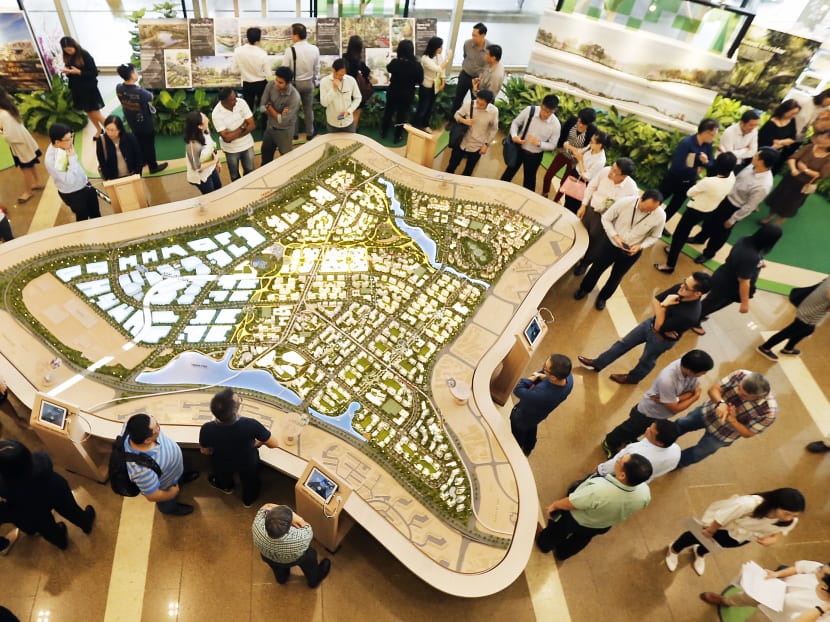AI-powered system in the works to help new Tengah town save energy
SINGAPORE — In a future "smart energy town" that city planners here are dreaming up, an artifical intelligence-powered system will detect power failures in residential blocks, traffic lights and street lamps, then channel energy from alternative sources to revive them. Excess energy generated by solar panels mounted on top of public flats would also be stored and used later for servicing the estate, such as in operating lifts or water pumps.

Visitors to the HDB Hub looking at a model of the Tengah masterplan at the launch of a public exhibition to showcase the key planning concepts for Tengah, on Sep 9, 2016.
SINGAPORE — In a future "smart energy town" that city planners here are dreaming up, an artifical intelligence-powered system will detect power failures in residential blocks, traffic lights and street lamps, then channel energy from alternative sources to revive them.
Excess energy generated by solar panels mounted on top of public flats would also be stored and used later for servicing the estate, such as in operating lifts or water pumps.
With the vision of transforming the new Tengah town into Singapore's first "smart sustainable town", the Housing and Development Board (HDB) and utility provider SP Group signed an agreement on Tuesday (July 10) to study the development and testing of a centralised energy software system, envisioned to work like a "brain" that will collect and process data to analyse how each household, each neighbourhood, and the entire town use energy.
Dubbed the "smart energy concierge", this system will tap artificial intelligence to spot patterns and anomalies in energy flows to minimise disruption to services and optimise the use of energy.
It will be connected to the energy grid, energy storage systems and solar photovoltaic generators, the HDB said in a statement on three research agreements it signed on Tuesday.
This project will also explore a mobile application for future Tengah residents to pay utility bills, subscribe to "smart" household products and services, and track their energy usage.
The HDB-SP Power study, which will enable a more efficient and sustainable model of energy management, is expected to complete within a year.
The project will also explore the development of centralised cooling system in a housing development. This is envisaged as a more energy-efficient service that residents can subscribe to, instead of using the conventional air-conditioning systems.
On Tuesday, at the World Cities Summit, the HDB inked another two more research agreements with external partners to enhance the construction efficiency and design capabilities of future estates.
The first — which involves a three-year partnership with prefabrication firm Robin Village Development, consulting agency Witteveen+Bos and Nanyang Technological University — explores the use of a 3D concrete printer to create full-scale building elements.
Currently, customised mould sets are used in designing precast architectural building forms. Depending on the intricacy of the design, fabricating a set of large, volumetric moulds could take up to two months.
If successful, the new concrete printer will improve productivity and reduce dependency on precast fabrication workers. This collaboration is expected to cost S$3 million.
Finally, HDB signed the partnership with landscaping firm ISO Landscape to explore setting up floating solar panels in the open sea.
Looking to the sea is one way to further harvest solar energy given the Republic's land constraints, said National Development Minister Lawrence Wong, who was at the signing ceremonies on Tuesday.
New technologies offer "much potential" for transforming and improving the living environment, said the minister.
"While we have done well in building a green and liveable city in Singapore, we also recognise that we must never rest on our laurels. There is still much more we must do to make Singapore more liveable and sustainable," he said.









